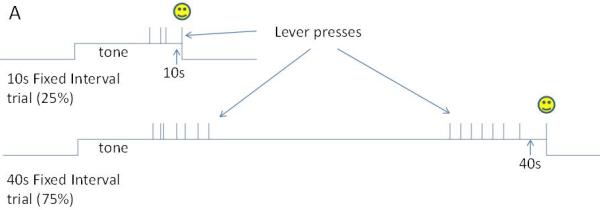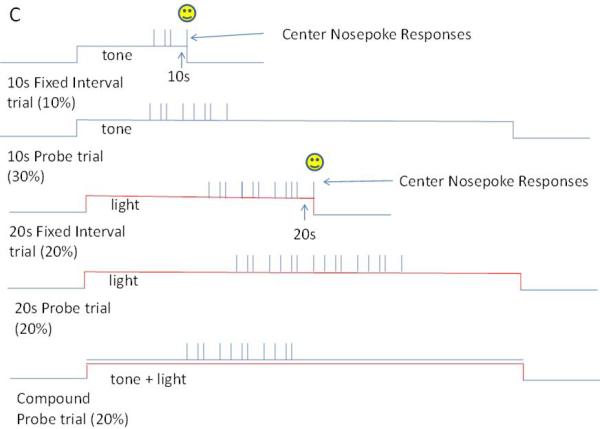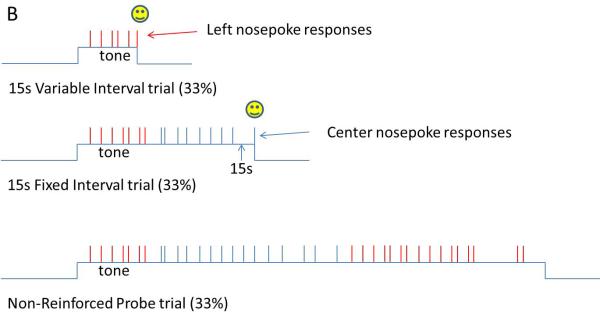Figure 1.


Graphical representation of the timing tasks discussed in this chapter, as well as the typical single trial behavioral pattern.
Panel A. In this two duration fixed-interval procedure, a tone commences signaling the start of a trial. On “short” trials (top), the first lever press after 10s earns reinforcement and terminates the signal. On “long” trials (bottom), the first lever press after 40s earns reinforcement and terminates the signal. There is no programmed consequence of responding prior to the criterion duration, and no signal is provided regarding which duration will be reinforced. As a result, the rats tend to respond around 10s, and if no reinforcement is received, pause for some time and then respond again around 40s.
Panel B. In this concurrent variable-interval/fixed-interval procedure, a tone commences signaling the start of the trial. On variable-interval trials (top), reinforcement is delivered with a low probability (e.g., 1%) for each moment that the rat's snout is in the left nosepoke. On fixed-interval trials (middle), reinforcement is delivered for the first response on the center nosepoke after 15s have elapsed since trial onset. On probe trials (bottom), no reinforcement is provided and the signal stays on for at least 40s. As no signal is provided to indicate trial type, the rats begins responding on the left, variable-interval, nosepoke, switches to responding on the center, fixed-interval, nosepoke as time approaches 15s, and then switches back to responding on the left nosepoke after 15s has passed.
Panel C. In this two-modality, two-duration peak-interval procedure, a signal commences signaling trial onset. On 10s fixed-interval trials, a tone commences, and the first center nosepoke response after 10s is reinforced and the signal is terminated. On 20s fixed-interval trials, a light commences, and the first center nosepoke response after 20s is reinforced and the signal is terminated. A proportion of trials are probe trials in which either the tone or light commences and stays on for 3-4 times the associated fixed-interval duration, but no reinforcement is delivered and the stimulus terminates in a response-independent manner. Rats respond on these trials around the time that reinforcement is normally delivered. In addition, compound probe trials were presented in which the tone and light were simultaneously presented. On these trials, rats responded maximally at a time in-between the two fixed-interval durations.

